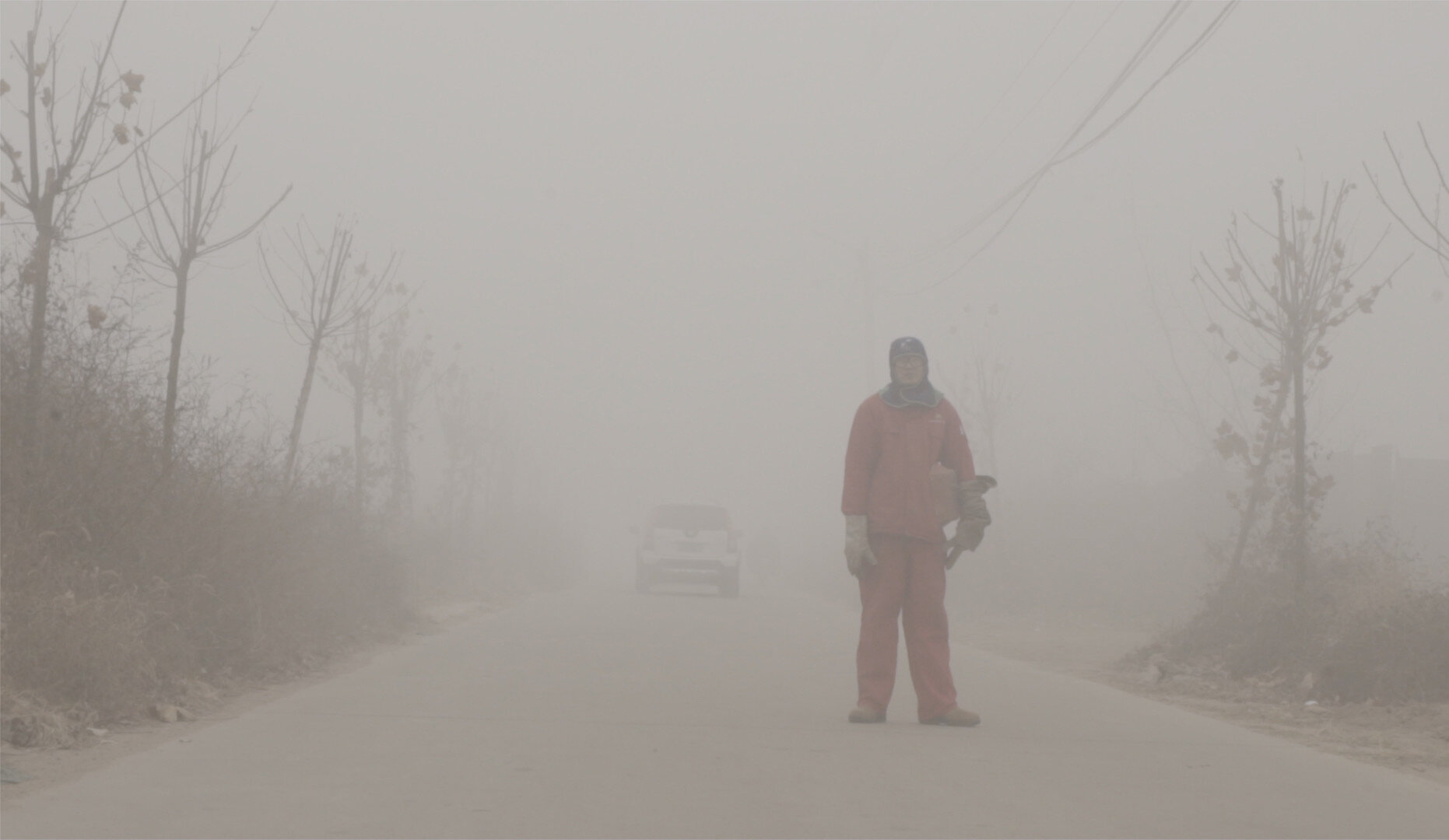Planet in Focus 2020: Smog Town
Han Meng’s Smog Town is a look behind the curtain of Chinese bureaucracy. It follows environmental regulators in the city of Langfang, which is one of China’s most polluted cities and just outside the capital, Beijing. In recent years, China has implemented a strict anti-pollution policy in an attempt to reduce the dangerous smog that blankets its major cities. The film takes us into dingy offices, onto calls with party officials, and out into the field where regulators break up illegal factory operations or confiscate illegal coal ovens from residents in an effort to reduce pollution. The film has a remarkable level of access for a documentary, especially a Chinese one. As a result of such access, Smog Town captures the contradictory nature of modern environmental policy and Chinese bureaucracy more generally.
Han Meng was a journalist before she was a filmmaker and she offers more reportage than commentary in Smog Town. Her formal approach resembles direct cinema from the likes of Frederick Wiseman. There are no talking head interviews or dialogue between those in front of the camera and the filmmakers behind it. Instead, the filmmakers stay quiet and observant as they follow the men of the Langfang environmental protection agency around the city and into their behind-the-scenes meetings. Like a fly on the wall, Han’s camera watches them in their triumphs and frustrations as they try to adhere to the strict quotas delivered by the Chinese Communist Party.
Most of the content of the film is relatively dry. There are sporadic drone shots and frightening images of the city buried within the putrid, dusty smog, but most of the scenes are men in boardrooms or offices discussing figures and then these same men in dingy garages or greenhouses implementing adherence with the strict pollution rules by reporting residents for infractions. The approach is fairly repetitive. It’s loosely structured around the winter 2018-2019 cycle of pollution readings, in which the party poses an ultimatum to Langfang: either reduce emissions by at least 60% or heads will roll. But there is little differentiation between the beginning and end of the film. Little progress is made, which is largely the point. Within this bureaucratic machine, there is no true progress, just an endless shifting of responsibility onto other cogs in the machine.
The Kafkaesque nature of this endless bureaucracy is best captured in a scene where Han follows a black market spray-painting entrepreneur as he heads to a minor agency to get some answers about business licences and environmental regulations. In the previous scene we see regulators shut down his operation. Now he wants to find out how he can get the necessary license to make his business legal and continue operating. He goes to one desk to talk to a clerk and is sent to another room to talk to another. That clerk sends him on to another, and that clerk sends him back to the first. That first clerk dodges the questions and finally another frustrated clerk interrupts and tells the man he has no hope of getting a license because he is too poor. Only because this bureaucrat is frustrated with the commotion of the entrepreneur's questions does he break the endless cycle of bureaucratic shuffling.
Men like this entrepreneur seem to bear the brunt of the regulatory policies in Langfang and other parts of China. Although the majority of pollution produced is a result of large-scale industries such as steel manufacturing, the regulators focus their efforts on the individual residents and small-business operators of the city to eat away at their pollution numbers. Women have their large tank water heaters confiscated and small businesses are told to replace their fans and air filtration systems. The regulators even lecture the firemen about how to spray water so as not to shoot dust up into the air and contribute to bad air quality. Such is their desperation to reduce their numbers.
But we never see them enter the massive automotive or steel factories. It’s only late in the film that a major factory is closed to reduce emissions, sparking a labour dispute, but we never see the regulators have any say in such a closure. The omission speaks volumes in its absence, showing how for all the supposedly communist underpinnings of Chinese society, which is supposed to be antagonistic to capitalistic industry, the Chinese Communist Party is reliant on these industries to fuel their economy and, by connection, their own power. Thus, they let corporations ignore the rules and force individual workers to bear the brunt of social policy.
Han Meng never makes a didactic point about the ineffectiveness of Chinese bureaucracy, but she doesn’t need to. Her footage does the talking for her, showing all the ways that environmental policies fail due to endless red tape, political maneuvering, and corporate interests; the main effect of the policy seems to be to keep the bureaucratic workers in a constant paranoiac frenzy.
The only drawback to Han’s approach is that Smog Town makes this point within 40 minutes of its runtime and then continues on for another 49 minutes. It would’ve been an elegant hour-long documentary for Al Jazeera (who Han has worked for in the past), but seemingly was boosted to feature length to justify festival submissions. There’s a compelling thesis here, but I can’t help but think this particular approach to the material would benefit from a more compact presentation. Sometimes brevity makes a damning artistic message that much more effective.
6 out of 10
Smog Town (2019, China/The Netherlands/Japan/South Korea)
Directed by Han Meng.
